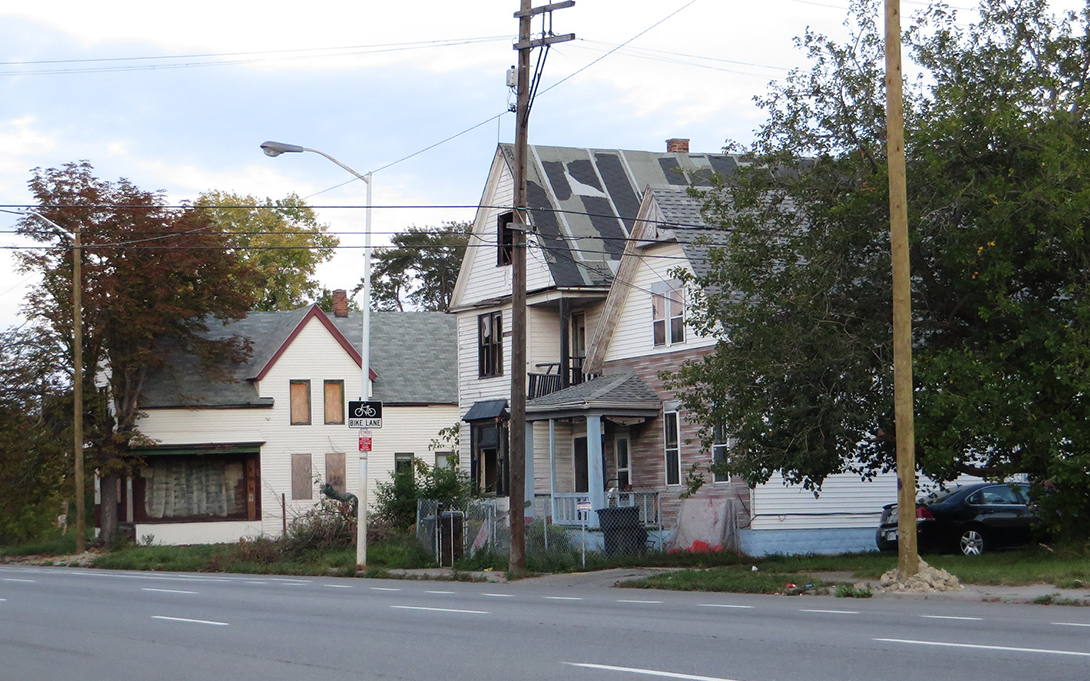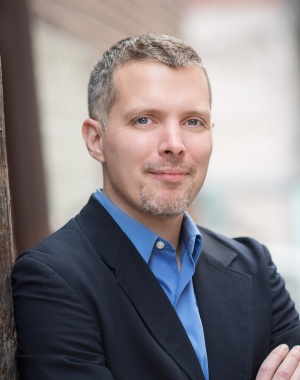
Access to quality housing is essential to our well-being and the gateway to resources. Unfortunately, this basic necessity remains out of reach for far too many families, creating an ongoing crisis plaguing millions of Americans. In fact, in 2020, 30% of all U.S. households had “unaffordable” rent or mortgage payments, defined as exceeding 30% of monthly household income.
“Since the housing crisis is an intersectional and multidimensional issue, it’s important that we identify the most promising, and sometimes the most daring, strategies to tackle each of those issues to integrate them in new visions for how we house our families and communities,” said Jonathan Massey, dean and professor of architecture at the Taubman College of Architecture and Urban Planning.
And with its tremendous breadth of researchers, faculty, and students combined with robust community partnerships, U-M is uniquely positioned to lead the charge.
“Housing is just an incredibly central piece of the stability of families. Understanding who has access to certain neighborhoods and who has access to housing stock is critical, and the University of Michigan has a lot of expertise here,” said Luke Shaefer, Hermann and Amalie Kohn Professor of Social Justice and Social Policy at the Ford School of Public Policy, professor of social work, and director of U-M’s Poverty Solutions.
A slew of challenges
Three major problem areas surround our current living environments:
- Affordability, especially as the cost of housing is rapidly rising. This can be attributed to low and unstable incomes, and a short supply of affordable housing, resulting in a spike in home prices—and, in many cases, homelessness. Additionally, the cost of home repairs to improve living environments adds an extra burden on many homeowners.
- Health, specifically the effects of lead exposure caused by toxic legacy infrastructures that contaminate drinking water, as well as lead-based paint in older homes polluting the air.
- Sustainability issues stemming from home design and construction. Massey notes that between 30 and 40% of total human carbon emissions come from the built environment.
In addition to these overarching issues, Massey sees housing as one of the mechanisms that produces and sustains racial disparities in health, wealth, education, employment, and overall life opportunity.
What’s more, the broader issue of homelessness has a significant impact on educational outcomes. This is a key focus area for Shaefer.
“The subgroup among public school students in the state of Michigan that has the most difficulty in school is homeless children, who are the most likely to be chronically absent, so they’re not getting to school to begin with,” Shaefer said.
A holistic approach
Mending matters of this magnitude can’t happen overnight. But U-M sees an opportunity to harness its extensive research and practice knowledge from across campus to improve living environments for all. The Collective for Equitable Housing (CEH) is one of the most visible efforts. Established in 2021 as the first platform for Taubman College and U-M to study housing holistically, CEH builds upon cross-campus relationships, as well as institutional, governmental, and organizational partnerships.
“The goal is to build upon capacities at Taubman College and interact with others across the university to develop more interdisciplinary and actionable research that can put forth propositions for how to transform financing, policy, or regulatory barriers that have big impacts on the provision of affordable housing,” said Sharon Haar, professor of architecture at the Taubman College.
Leveling the playing field
Before the pandemic, Poverty Solutions and Taubman faculty discovered that in one Michigan county, only 4% of people being evicted had access to legal counsel. This data shows a lack of protections in place for families facing eviction.
“We’ve been looking at proposals for right to counsel where if somebody is facing eviction—maybe they should be evicted, maybe they shouldn’t—they deserve to have a lawyer,” Shaefer said.
Another startling statistic? Since 2008, nearly one-third of Detroit homes have been lost to tax foreclosure, as policies that were meant to help families stay in their homes became difficult to access.
“As part of a massive coalition, our scholars were part of bringing some evidence-based changes to those policies, and it’s really increased the number of people who’ve been able to access them,” Shaefer said.
Investing in the future
In 2016, Taubman College partnered with the City of Detroit Planning and Development Department (PDD) to re-envision local neighborhoods with the launch of Systems Studio. U-M students were assigned to work at targeted sites that were deemed a priority by PDD, thinking of innovative ways to design housing, while also considering social and economic aspects, such as inclusive housing and affordability.
“Students were working on real sites that were going to be developed, doing research and first passes at urban design opportunities, density, and programs, and what might actually happen there,” Haar said.
Students present their final projects to faculty, staff from Detroit PDD, and other invited guests during a final review in the Systems Studio class.
When it comes to mitigating the negative effects of climate change, architecture faculty at U-M are collaborating with the College of Engineering to test out new construction methods that specifically aim to reduce carbon outputs from construction, such as the use of timber, which emits a significantly lower amount of carbon than concrete or steel. These new building methods also use digital-design tools and digital fabrication, such as robotics for 3D printing and human-robot collaborations in building construction.
Furthermore, Poverty Solutions has pushed to make home repair resources available in Detroit for projects like lead abatement work and replacing roofs to weatherize homes. In fact, former research assistant Ryan Ruggiero (MPP ’19) created a resource guide that lists available home repair programs in the city, what they provide, and who’s eligible. According to Shaefer, it’s one of Poverty Solutions’ most successful publications.
A communal effort
To aid in U-M’s initiatives and connect them with the Detroit community to support collective work in this space, the Rocket Community Fund and the McGregor Fund, among others, have taken up the gauntlet.
“The University of Michigan has been a critical partner in ensuring that we understand the impact of existing programs, as well as the gaps that must be addressed to better support Detroit residents,” said Laura Grannemann, vice president of the Rocket Community Fund. “U-M research has helped us evaluate tax foreclosure prevention programs, bolster homeownership, and define next steps in complex issues like increasing access to home repair.”
Vanessa Samuelson (BS ’02), director of learning and reports at the McGregor Fund, sees philanthropic support as a bridge that connects U-M’s resources directly with communities already addressing homelessness and the housing crisis.
“Philanthropy can pay for resources for community-based work to end homelessness that public funding sources often don’t—resources that can amplify the voices and wisdom of community, connect local action to centers of power, and support learning processes that reflect on what is working, how, and why,” Samuelson said.
Pioneering change
Confronting the housing crisis takes an all-hands-on-deck approach, and Massey believes that U-M’s unparalleled capacity can ignite a housing transformation.
“Every part of a great research university like Michigan has a role to play in tackling the housing crisis,” Massey said. “For instance, we need the policy insights of the Ford School, we need the construction expertise of engineers and scientists and architects, we need the design ingenuity of the architect, and we need the understanding of communities from the School of Social Work. Ultimately, the School of Education knows a lot about what kinds of communities and school systems are going to foster the success of the people who live in the housing. Not every university can offer you access to the very leading edge of innovation the way University of Michigan can.”
This article was written by Anissa Gabbara.
